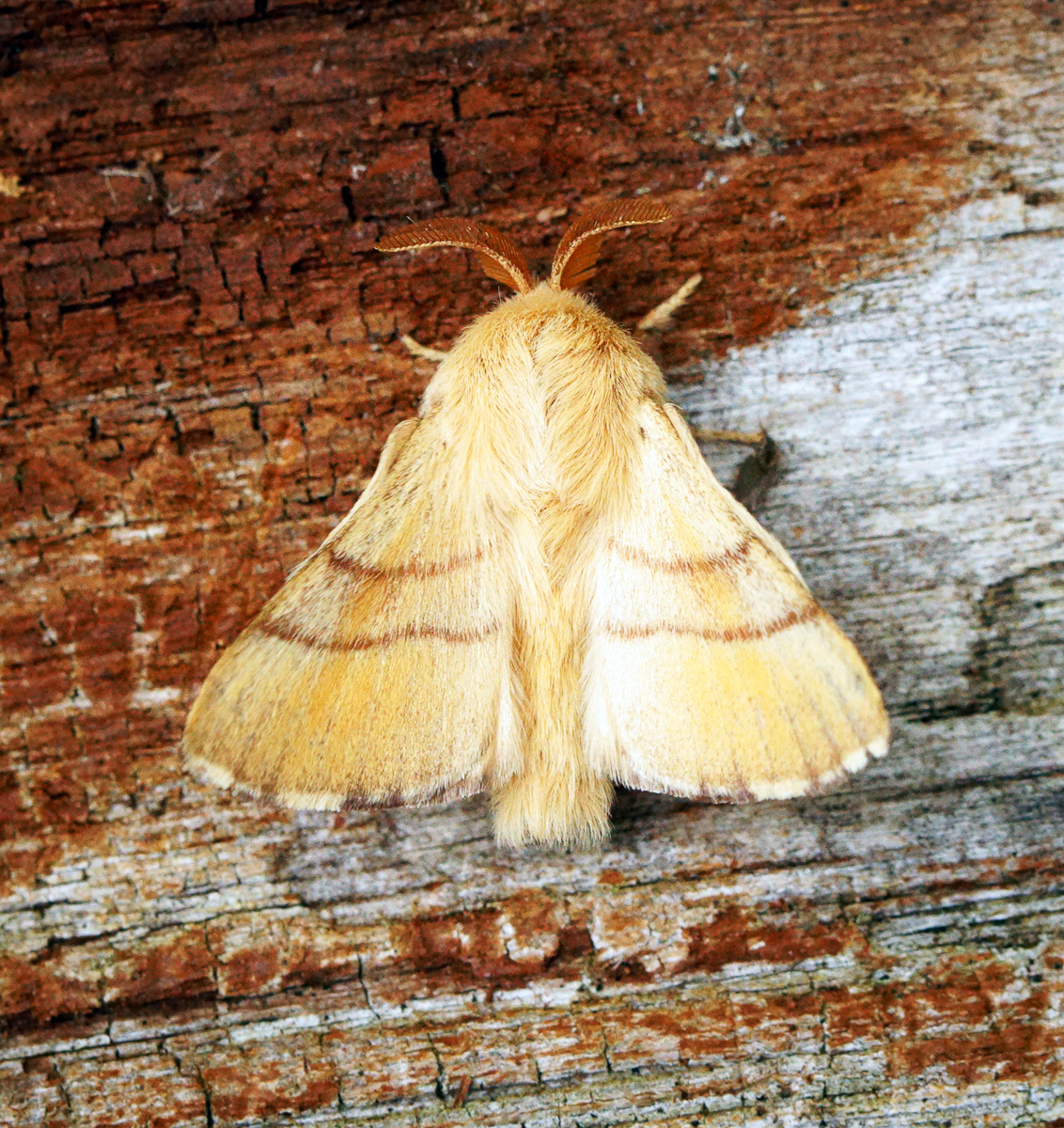
Photo © Ben Sale
The lackey moth (Malacosoma neustria) is a moth in the family Lasiocampidae. It was first described by Carl Linnaeus in his 1758 10th edition of Systema Naturae. It is common across southern Britain and central Europe. Malacosoma species are notable for their caterpillars which are brightly coloured and form silken tents to regulate their temperature. Malacosoma neustria caterpillars are brown with blue, orange and white stripes. The adults are a fairly uniform brown. The larvae feed mainly on trees and shrubs from within their tents.
The lackey moth is widely distributed across Europe, Asia and North Africa. Its habitat is the edges of woodland, bushy grassland, coppices, hedgerows and road verges. The caterpillar's food plants include apple, pear, plum, willow, hornbeam, lime and oak.
Eggs of the lackey moth are laid in ring-like bands in late summer on twigs of the host trees where they overwinter. On hatching, the larvae are gregarious and weave for themselves a silken canopy of webbing. They eat the young foliage of the tree and moult several times as they grow larger. When ready to pupate they drop to the ground and undergo metamorphosis, each forming a pupa sandwiched between leaves of plants growing beneath the tree. In both Britain and Germany the flight period is from June to August.
Source: Wikipedia
The primary larval foodplants are Apple (Malus domestica), Blackthorn (Prunus spinosa), Bramble (Rubus fruticosus), cherries (Prunus spp.), Dog-rose (Rosa canina), elms (Ulmus spp.), Gooseberry (Ribes uva-crispa), Grey Poplar (Populus x canescens), Hawthorn (Crataegus monogyna), Hazel (Corylus avellana), Holm Oak (Quercus ilex), oaks (Quercus spp.), Raspberry (Rubus idaeus), Shrubby Cinquefoil (Dasiphora fruticosa), Silver Birch (Betula pendula), Wall Cotoneaster (Cotoneaster horizontalis) and willows (Salix spp.).